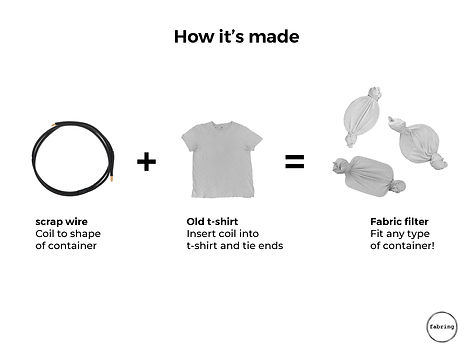
LAUNDRY TOOL FOR DEVELOPING NATIONS
2021, Reckitt Benckiser
Reckitt Benckiser (RB) is a producer of health, hygiene and home products, Based in the UK. They proposed a design challenge for collecting and removing the dirt from the water used to hand wash clothes. ''People living in impoverished parts of the world suffering from water scarcity and poor water quality could take advantage from flocculation technologies for purifying/clarifying the water before washing their laundry by hand"-RB. Such tool would enable the efficient removal of coagulated dirt particles.
Despite most recent design projects revolving around consumer goods and technology, I have long wished to collaborate on a project that works toward social change. I found this an exciting opportunity to put forward a design proposal, that could potentially benefit the developing world and I'm excited to hear RB report back on it.
My proposal leveraged the concept of using entirely locally-sourced waste materials. This would enable anyone to produce it, using readily-available materials, for a very low cost. For RB, this also eliminates the complexity of mass-producing an item and distributing it to remote parts of the world. Not only this, but it gives purpose to otherwise waste products, and both components can be separated and recycled once worn out.
Check out the demonstration video below, for how this device could be used.




PROCESS
Brief
"In many parts of the world, millions of people face issues of water scarcity and poor water quality. Sometimes the water used for laundry purposes is taken from rivers and wells, but it often contains sediments and particles in suspension that make it turbid, thus not suitable or even counterproductive for laundry, as these particles would ultimately deposit on garment’s fabric and fibres. In this context, flocculant products could be used as additives to the laundry cleaning formulations to purify/clarify the water, by causing particles to aggregate into jelly agglomerates (“floccules”), that can be removed more easily before hand-washing the clothes. The aim of the contest is to find intuitive, effective and simple tools that may help people to easily remove the floccules from the laundry bucket before hand-washing their clothes". -RB

"Washing Day" by Rod Waddington is licensed under CC BY-SA 2.0
Research
I began by looking into existing products on the market, that could be repurposed for this application. A couple of predictable suspects include a small pond net or some kitchen utensils such as a sieve or perforated spatula. I later found these to be less-than-ideal during testing.
I also researched the process that different communities go through, in order to do their laundry. For anyone that has washed even one batch of clothing by hand before, knows how laborious this process can be. The majority of primitive laundry processes revolve around manually washing in a waterway, most typically rivers or lakes. It was interesting to see that there was little difference in practice, from Senegal to Sri Lanka.
Testing
Beginning in the kitchen, I began experimenting with methods to remove soaked porridge oats, from a container of water. It was good to do this with a clear container, because I cold observe how the sedimented oats react upon behind collected.
One notable observation was that when trying to capture with some form of net or scoop, the movement of the device would create a vortex and displace the oats before capturing them. This was important because with much finer coagulated dirt (the eventual substance), it would likely disperse easily through the water.
Although I didn't have access to the eventual flocculant chemical, I tried a few existing flocculant products during testing. None of which provided the same performance as proposed by RB. Despite this I experimented with different types of dirt and clay, with varying consistencies and concentration within water.





I created number of prototypes using plastic bottles at first, to create makeshift scoops. Due to the abundance and low-value of this item, it could have been great to find a new purpose and upcycle it. Nevertheless it proved less efficient that a fabric-style filter - Of which, I prototyped several different types.
At first, I thought one could simply place over the bucket before collecting water. While this is effective for large particle removal, it fails to capture the fine particles suspended in the water (a task which the flocculant succeeds in capturing). I also tried to line the bucket with fabric - add water and flocculant - then pull fabric out after. This was inefficient due to the fabric floating into the middle of the bucket as opposed to lining the outer walls.



Solution
Finally I settled on a fabric filter, which is bound to a wire frame. This was easy to create with a T-shirt and generic garden wire. The key was to ensure a tight fitting between the ring and the bucket base, to ensure the filter would remain fixed in the bottom upon filling. Despite not having the correct flocculant product, this device was surprisingly effective at removing the dirt particles from the water.
It would be great to see this solution partnered with the flocculant, to provide a cleaner and safer laundry procedure to people around the world.

Lon&Queta is licensed under CC BY-NC-SA 2.0




